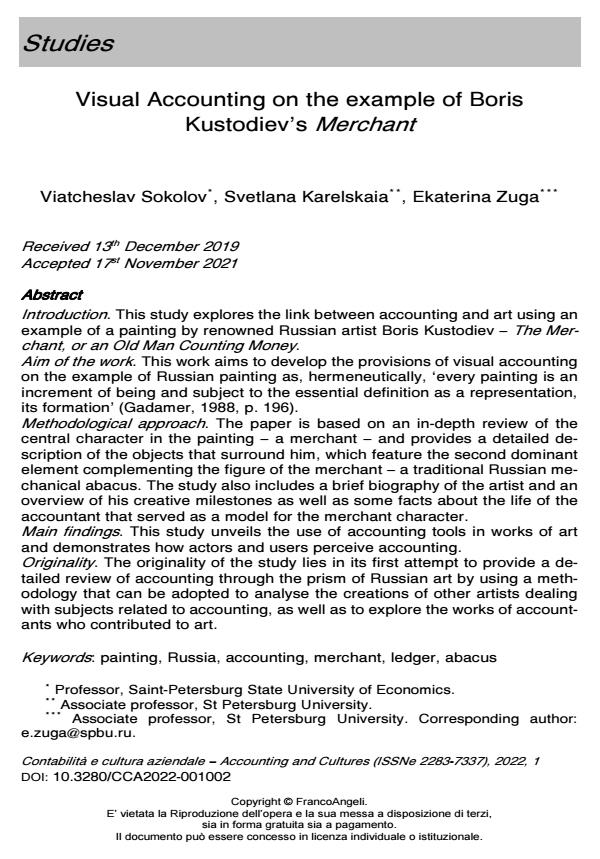Visual Accounting on the example of Boris Kustodiev’s Merchant
Titolo Rivista CONTABILITÀ E CULTURA AZIENDALE
Autori/Curatori Viatcheslav Sokolov, Svetlana Karelskaia, Ekaterina Zuga
Anno di pubblicazione 2023 Fascicolo 2022/1
Lingua Inglese Numero pagine 19 P. 9-27 Dimensione file 318 KB
DOI 10.3280/CCA2022-001002
Il DOI è il codice a barre della proprietà intellettuale: per saperne di più
clicca qui
Qui sotto puoi vedere in anteprima la prima pagina di questo articolo.
Se questo articolo ti interessa, lo puoi acquistare (e scaricare in formato pdf) seguendo le facili indicazioni per acquistare il download credit. Acquista Download Credits per scaricare questo Articolo in formato PDF

FrancoAngeli è membro della Publishers International Linking Association, Inc (PILA)associazione indipendente e non profit per facilitare (attraverso i servizi tecnologici implementati da CrossRef.org) l’accesso degli studiosi ai contenuti digitali nelle pubblicazioni professionali e scientifiche
Introduction. This study explores the link between accounting and art using an example of a painting by renowned Russian artist Boris Kustodiev - The Merchant, or an Old Man Counting Money. Aim of the work. This work aims to develop the provisions of visual accounting on the example of Russian painting as, hermeneutically, ‘every painting is an increment of being and subject to the essential definition as a representation, its formation’ (Gadamer, 1988, p. 196). Methodological approach. The paper is based on an indepth review of the central character in the painting - a merchant - and provides a detailed description of the objects that surround him, which feature the second dominant element complementing the figure of the merchant - a traditional Russian mechanical abacus. The study also includes a brief biography of the artist and an overview of his creative milestones as well as some facts about the life of the accountant that served as a model for the merchant character. Main findings. This study unveils the use of accounting tools in works of art and demonstrates how actors and users perceive accounting. Originality. The originality of the study lies in its first attempt to provide a detailed review of accounting through the prism of Russian art by using a methodology that can be adopted to analyse the creations of other artists dealing with subjects related to accounting, as well as to explore the works of accountants who contributed to art.
Parole chiave:painting, Russia, accounting, merchant, ledger, abacus
Viatcheslav Sokolov, Svetlana Karelskaia, Ekaterina Zuga, Visual Accounting on the example of Boris Kustodiev’s Merchant in "CONTABILITÀ E CULTURA AZIENDALE" 1/2022, pp 9-27, DOI: 10.3280/CCA2022-001002